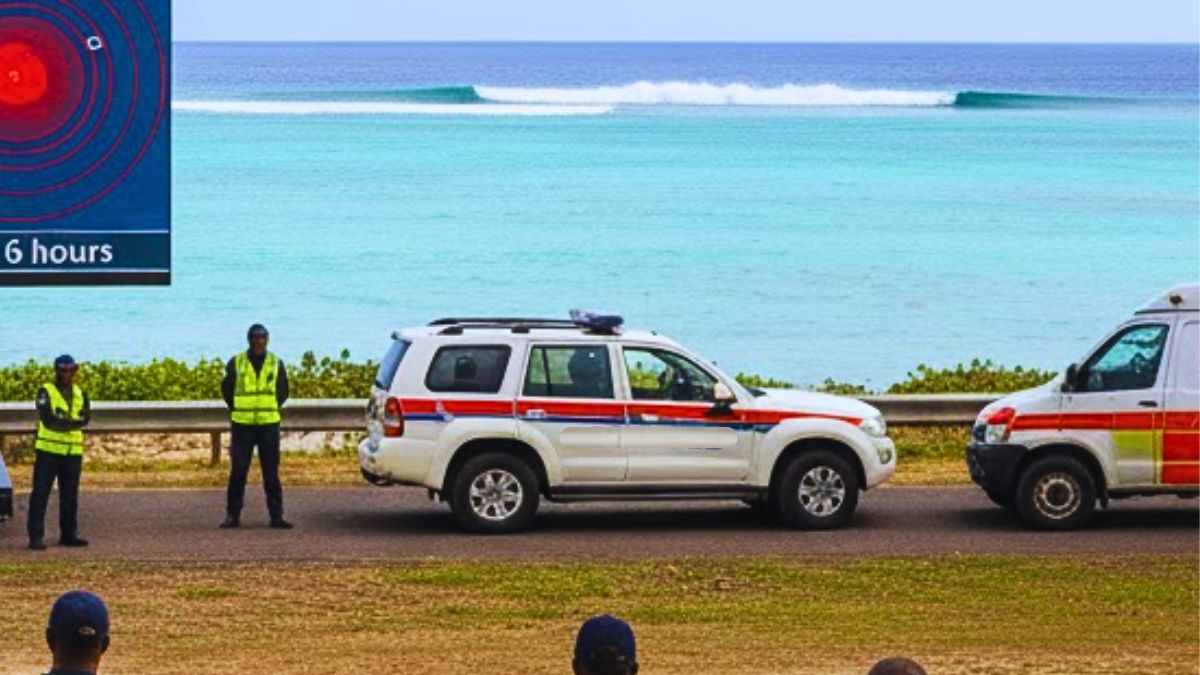News
Mauritius Puts Tsunami Readiness to the Test in Major Indian Ocean Drill

A major regional tsunami simulation drill, “IOWave25,” put alert and evacuation systems across Mauritius to the test on Wednesday, 15th October, coordinated by the National Disaster Risk Reduction and Management Centre (NDRRMC).
The large-scale exercise, which involved Indian Ocean nations being placed in a fictional tsunami threat situation, was specifically designed to test the coordination between various alert levels and preparedness measures.
Its core purpose was to allow National Tsunami Warning Centres and Disaster Management Offices to implement their Standard Operating Procedures (SOPs).
Alert Levels Activated and Evacuation Ordered
During the Mauritian segment of the drill on 15th October, which focused on the most plausible regional scenario, the Vacoas meteorological station, acting as the National Tsunami Warning Centre, issued a Tsunami Watch at 10:00 AM. This followed a simulated magnitude 8.7 earthquake near the coast of Pakistan.
The National Emergency Operations Command (NEOC) was activated at Level 1 at 10:20 AM. A Tsunami Warning was subsequently issued at 10:32 AM, indicating a real risk with a potential impact delay of six to seven hours.
This was noted as a “slow-onset event,” in contrast to rapid phenomena like heavy rains, but with potentially devastating effects.
By 10:35 AM, the alert level was raised to Level 3—the maximum NEOC level. This step triggered an ordered evacuation of coastal zones.
The Commander of the Special Mobile Force and head of the NDRRMC, Premanand Budhoo, explained that the exercise mobilised all stakeholders, including first responders deployed on the ground and local authorities.
The NEOC, activated at Level 3, required all concerned parties to convene at the NDRRMC headquarters.
Wide-Ranging Coordination and Local Drills
The evacuation and alert procedures were conducted in close collaboration with multiple key stakeholders, including various police units, local authorities, the Fisheries Protection Service, the National Land Transport Authority, and the Association des hôteliers et restaurateurs de l’île Maurice alongside other tourism operators.
Furthermore, the drill extended to the local level. Mukool Munoruth, Assistant Permanent Secretary at the Ministry of Local Government, confirmed that all 12 district councils, particularly the seven coastal ones, activated their respective NEOCs.
Crucially, two district councils, Grand Port and Flacq, went beyond planning to conduct actual evacuation simulations in four specific regions: Petit-Sable, Grand-Sable, Grande-Rivière-Sud-Est, and Camp des-Pêcheurs.
Other councils, such as Rivière-du-Rempart and Pamplemousses, organised table-top exercises with partners including the Road Development Authority and the Ministry of Education to plan their response procedures.
Commander Budhoo also confirmed the drill’s wide scope, including Rodrigues, Agalega, and St. Brandon, where the Emergency Operations Command was also activated.
Regional Context and Historical Necessity
The need for such regular drills and improved coordination was highlighted by the devastating Boxing Day Tsunami on 26th December 2004, which was triggered by a magnitude 9.1 submarine earthquake off Sumatra.
That catastrophe affected Indonesia and several Indian Ocean countries, exposing the absence of an effective early warning system and resulting in over 230,000 deaths across 15 countries.
The IOWave25 simulation was organised by the IOC Intergovernmental Coordination Group for the Indian Ocean Tsunami Warning and Mitigation System (ICG/IOTWMS), following its 14th session in Indonesia in November 2024.
The simulations are based on real-time scenarios to assess the efficiency of all actors, from Tsunami Service Providers to coastal communities.
The ‘IOWave25’ drill involved four scenarios in total:
- 25th September: Magnitude 9.0 earthquake in the Sunda Trench (Indonesia).
- 15th October: Magnitude 9.0 earthquake in the Makran Trench (Pakistan/Iran) – participated in by Mauritius.
- 25th October: Tsunami caused by the submarine eruption of the Fani Maore volcano (Mozambique Channel).
- 5th November: Magnitude 9.2 earthquake in the Sumatra Trench.
A special team has been established to oversee the drill’s planning and implementation, ensuring procedural consistency and drawing lessons to enhance regional early warning and evacuation plans.
The exercise also served to test indicators for the UNESCO-IOC Tsunami Ready Recognition Programme.
Source: l’Express











